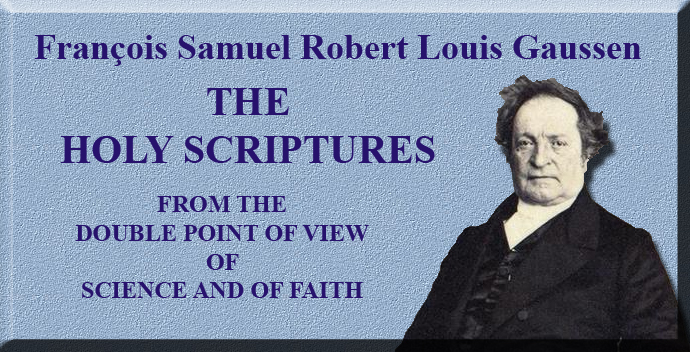
The Holy Scriptures
From the Double Point of View of Science and of Faith
By François Samuel Robert Louis Gaussen
Part First - Canonicity of all Books of the New Testament
Book 1 - Chapter 1
|
6. THE use of the term canon,1 in the acceptation it still retains, may be traced t0 a very high antiquity. In Hebrew, Greek, and Latin, the words קָנְה, Κάννη, Κάυυα, Κόνων, canna, all derived from the same source, literally mean a reed, a straight rod, a cane, a measure, a rule; and Κάυων, in a figurative sense, more particularly denotes a very accurate and perfect rule. It was in the strict and literal sense that the words rod and canon were applied in the Middle Ages to tubes used in throwing projectiles by means of gunpowder; and it was figuratively that Paul said to the Galatians, “As many as walk by this rule (this canon), peace be on them;”2 and to the Philippians, “Whereto we have attained, let us walk by the same rule.”3 7. So early as in the times of Paul, the grammarians of Alexandria used the same term to denote the whole assemblage of such approved works as were deemed standards of excellence in literature; and ecclesiastical writers soon adopted it to express sometimes the whole compass of Christian doctrine — our rule of life; sometimes the Sacred Volume — our only rule of faith; and sometimes the list of Scriptures, of which that rule consists. The last acceptation finally predominated, and in this sense, accordingly, it will be employed in the present work.
|
|
 |
 |
|
1) It was in Italy and in Italian (cannone or grande canna) that the term was used to denote an instrument of war. 2) Gal. vi. 16. 3) Phil, iii, 16.
|
|
-
Site Navigation
 Home
Home What's New
What's New Bible
Bible Photos
Photos Hiking
Hiking E-Books
E-Books Genealogy
Genealogy Profile
Free Plug-ins You May Need
Profile
Free Plug-ins You May Need
 Get Java
Get Java.png) Get Flash
Get Flash Get 7-Zip
Get 7-Zip Get Acrobat Reader
Get Acrobat Reader Get TheWORD
Get TheWORD